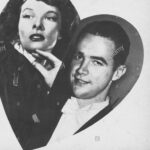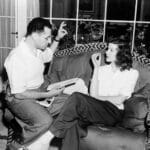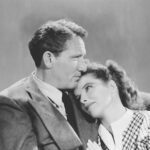Meet James Hepburn, the fourth Earl of Bothwell, a man whose life was a whirlwind of intrigue and danger. As the third husband of Mary, Queen of Scots, he became tangled in a web of suspicion and scandal. Was he a ruthless schemer who murdered Mary’s previous husband, or just a pawn in a conspiracy that changed the fate of a nation? Join us as we delve into the tumultuous life of James Hepburn, a man whose ambition and alleged crimes left an indelible mark on Scottish history.
From Upward Climb to Infamy: The Rise of Bothwell
Born in 1534, James Hepburn inherited his title as the 4th Earl of Bothwell in 1556. From the outset, he displayed a keen ambition, navigating the treacherous waters of Scottish politics with cunning and audacity. His early marriages, first to Lady Anna Tronds and then to Jean Gordon, were likely driven more by political expediency than love, revealing a pattern of strategic maneuvering that would characterize much of his life.
A Dangerous Liaison: Bothwell and Mary, Queen of Scots
Bothwell’s life took a dramatic turn when he became entangled with the alluring and ill-fated Mary, Queen of Scots. Their paths, intertwined by the tumultuous politics of 16th-century Scotland, led to a passionate and ultimately disastrous love affair. As Mary’s reign was beset by rebellion and intrigue, whispers of a romance between the Queen and Bothwell began to circulate, scandalizing the Scottish court.
The murder of Mary’s husband, Lord Darnley, in 1567 cast a dark shadow over Bothwell and forever linked his name with Mary’s. Accusations swirled, implicating Bothwell in the assassination. Although he stood trial, the proceedings were widely seen as a farce, leaving a lingering cloud of suspicion.
A Marriage Doomed: The Unraveling Begins
Just weeks after Darnley’s death, Bothwell and Mary married, further inflaming the Scottish nobility. The marriage, viewed as a scandalous act of self-serving ambition by Bothwell, triggered a full-scale rebellion. The couple’s forces clashed with the rebel lords at the Battle of Carberry Hill in 1567. Facing insurmountable odds, Bothwell fled into exile, leaving Mary to face the consequences alone.
Exile and Imprisonment: The Final Chapter
Bothwell’s escape led him to Denmark, where instead of finding refuge, he was imprisoned in Dragsholm Castle. The circumstances of his capture and imprisonment remain shrouded in mystery, fueling speculation about his final years. He languished in captivity for a decade, eventually dying in 1578, his life a testament to the soaring heights and crushing lows of ambition and intrigue.
The Weight of Accusations: Bothwell’s Controversial Legacy
James Hepburn, Earl of Bothwell, was a lightning rod for controversy. The accusations leveled against him were many and serious, shaping how history remembers him:
- The Darnley Murder: The most damning accusation was his alleged role in Lord Darnley’s murder. The evidence against him was largely circumstantial, yet the timing of the murder and Bothwell’s well-known ambition led many to believe he was responsible.
- Abduction of Mary, Queen of Scots: Some historians believe that Bothwell abducted Mary and forced her into marriage, while others suggest she may have been a willing participant in a plot to secure their power.
- Treason and Rebellion: Bothwell’s open defiance of the Scottish regents, including military actions against them, led to accusations of treason, marking him as an enemy of the Crown.
The Enigma of Bothwell: Villain or Victim of Circumstance?
Centuries after his death, the truth about James Hepburn remains elusive. Was he a heartless villain who orchestrated murder to seize power, or was he a pawn manipulated by more cunning players in the deadly game of Scottish politics?
History paints a complex picture – a man of undeniable ambition and ruthlessness, but also one capable of inspiring great passion and loyalty. The story of James Hepburn, 4th Earl of Bothwell, is a cautionary tale about the seductive nature of power and the treacherous paths ambition can carve through human hearts.
What Happened to Mary after she married Bothwell?
Mary’s marriage to Bothwell triggered a wave of outrage among the Scottish nobility, who saw it as a betrayal and a dangerous power grab. They quickly mobilized against her, leading to her capture and imprisonment at Lochleven Castle. Forced to abdicate in favor of her infant son, James VI, Mary’s reign ended in a crushing defeat. While Bothwell managed to escape, he was eventually imprisoned in Denmark. Mary would spend the rest of her life a prisoner, eventually meeting her end on the executioner’s block in England in 1587, accused of plotting against her cousin, Queen Elizabeth I.
Greg Boyington: A Connection to History?
While seemingly unrelated, it’s interesting to note that the life of James Hepburn, steeped in 16th-century Scottish history, shares a curious link with a prominent figure from a very different era: Greg Boyington, a highly decorated United States Marine Corps aviator from World War II. Both men, separated by centuries and vastly different circumstances, serve as reminders that history is a tapestry woven with threads of ambition, triumph, and tragedy, connecting us across time in unexpected ways.
















